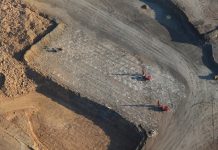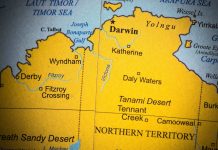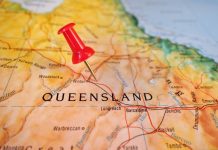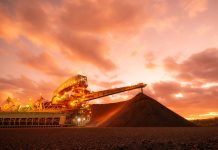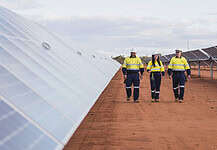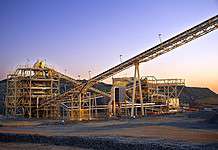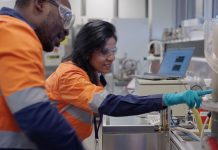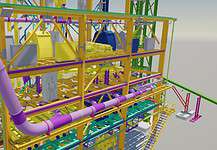Rio Tinto’s Hunter Valley Operations (HVO) project produced more than 13 million tonnes of thermal and semi-soft coking coal in 2015. Image: Rio Tinto.
By Elizabeth Fabri
AS thermal and coking coal prices recover from record lows, the resources industry remains hopeful the worst is now over for NSW’s economic ‘engine room’; the Hunter Valley.
The Hunter Valley is Australia’s largest regional area, comprising 11 local governments, about 600,000 residents, and the country’s seventh largest city, Newcastle.
Coal mining in the region dates back to 1791, and continues to drive the economy with a number of world-class coal projects spread across the 29,145sqkm expanse.
When coal prices took a hit four years ago, the Hunter’s strength was put to the ultimate test as it grappled with severe job losses and mine closures.
Times have been tough for the region, but an unexpected and sustained spike in coal prices this year has provided much needed confidence for existing and budding operations.
“The global price for thermal coal, which is the main coal produced out of the Hunter Valley, has increased for the last four months in a row which is very positive for the industry,” NSW Minerals Council chief executive Stephen Galilee said.
“That’s cause for some optimism that perhaps the worst is over, although we’re not quite prepared to let ourselves believe that just yet.
“We’d like to see a more sustained period of high prices before we were comfortable that was the case.”
While there was no denying the last four years had been tough, Mr Galilee said in the context of the last two decades, the Hunter Valley had doubled production and the amount of coal being exported through the port of Newcastle.
“We have more coal mining workers in the Hunter Valley now than we had 10 years ago and we have fewer operating mines, but they are operating more efficiently and delivering greater levels of production exports out of the world’s largest export port in Newcastle,” he said.
“Export levels are at or near record levels, and demand for the product is very strong.
“The prospects for the medium to long term are very positive, particularly because we have gone through a difficult period which has required us to bring down our production costs as an industry.”
Coal price impact
The Hunter Valley lost about 20 per cent of its coal mining workforce and closed down 11 operating mines in the last four years.
“We’ve lost about 3500 full time coal production jobs, so we’re now down to about 12,000 across the Hunter Valley,” Mr Galilee said.
“There has been a series of mine closures, or the higher cost coal mines being put onto care and maintenance, in response to the falling thermal coal prices in particular, so it has been a very tough time particularly for our coal mining communities in the Hunter.”
Thermal coal is the State’s most valued export commodity accounting for 20 per cent of NSW’s exports by value, including goods and services; so when prices dropped, the Hunter community felt the sting.
“After some very good years that included a sharp spike in prices to record high levels, the commodity price cycle for coal turned and turned sharply just over four years ago,” Mr Galilee said.
“If you look at the thermal coal price over the last 20 years, in about 2008 or 2009 there was a very unusual spike in the price driven largely by flooding events in Australia and also Indonesia that effected production and constrained all supply and pushed prices up significantly.
“Coming off such a high price peak into its cyclical downturn has made things tougher than they would have otherwise been if we had been going through the normal commodity cycle downturn that our industry and other export industries experience from time to time.”
Reflecting on the Hunter’s response to the economic downturn, Mr Galilee said if there was one word to sum up the industry it would be ‘resilience’, as mining company’s streamlined production processes to stay afloat.

Mt Arthur is the largest individual coal production site in the Hunter Valley. Image: BHP Billiton.
Current operations
Since the coal price slump, the number of operating mines in the region had dropped from 34 to 23; a sharp decline that sent the region and industry into a spin.
But despite sudden closures and job cuts, the large-scale open cut operations in the Hunter continued to thrive as mining companies drove down costs and increased production.
Some of the key contributors included BHP Billiton’s Mt Arthur Coal; Rio Tinto’s Mount Thorley/Warkworth and Hunter Valley Operations; Peabody Energy’s Wambo; New Hope’s Bengalla; and Glencore Xstrata’s 10 operations, including Ravensworth and Bulga.
As the Hunter’s largest coal mine, Mt Arthur made headlines in March when it slashed a further 290 jobs, but this was not expected to affect annual production of about 20 million tonnes a year.
Positive changes were on the horizon at Rio’s Mount Thorley/Warkworth operation outside of Singleton. In November 2015, the Planning Assessment Commission (PAC) approved an expansion at the mine, which would extend its life by more than 20 years.
In March 2015, the PAC also approved mining to continue at the Bengalla mine in Muswellbrook.
“This is also good news for local businesses that rely on mining operations like Bengalla, a project which last year spent around $130 million with over 350 businesses in NSW, with two thirds of that stimulus spent locally in the Hunter Valley,” Mr Galilee said at the time.
The Drayton South mine expansion was also approved by the Department of Planning and Environment, and was awaiting the green light from PAC.
Future projects
In the next few years, the Hunter Valley would see some significant new developments, Mr Galilee said.
“There have been a range of brownfields approvals and greenfields approvals over the past 12 months or so, and there are other potential greenfields operations that are in various stages of planning as well and seeking approval,” he said.“Our expectation is that those operations are going to be needed to meet the ongoing demand for the product, particularly into our markets in Asia, which are obviously very important for NSW in relation to our trading.”
One of the most talked about projects is the Mt Pleasant mine near Muswellbrook, a former Rio Tinto asset that was sold to Mach Energy in August.
“Mt Pleasant is a project that essentially has all its approvals in place and is moving into construction phase shortly,” Mr Galilee said.
Then there is the Wallarah 2 Project proposed for the Central Coast in the lower Hunter, which was in the planning system at the moment, along with Kepco’s Bylong project 55km north-east of Mudgee.
In October 2015, PAC also approved the development of Port Waratah Terminal 4, which when developed would provide much needed infrastructure to keep up with coal export capacity in the future.
“There is certainly a level of optimism underpinning the future development of the industry that we are seeing at the moment, and increasing commodity prices are also helping to drive that optimism,” Mr Galilee said.

Mount Thorley Warkworth comprises two open cut mines that are located adjacent to each other. Image: Rio Tinto.
Environmental concerns
Like all coal mining hubs in the country, the Hunter Valley isn’t immune to its share of environmental backlash.
“Most of our people working on those operations are living in those local communities and we do have strong local support for the industry generally, but there are some local people who have specific concerns about some of the operations there and we take those concerns very seriously,” Mr Galilee said.
“We deal with those concerns through the planning process itself and the approvals process.”
In April, two new studies on air quality in the lower Hunter were released by CSIRO, the Australian Nuclear Science and Technology Organisation (ANSTO), and AECOM.
The reports stated coal dust was a relatively minor pollutant to the region, and the majority of the time air quality met Australia’s strict national standards.
“This research cuts through the emotive debates of recent years to provide an objective picture of the various sources of air pollution in the region,” Mr Galilee said.
“There’s a very rigorous consideration as part of the approval process of the social and environmental as well as the economic impacts of projects that are proposed or extensions or modifications that are seeking approval from time to time.
“The system does accommodate those concerns.”
In 2010, the Upper Hunter Mining Dialogue was formed to address issues raised by the local community.
“Upper Hunter Mining Dialogue is a sophisticated community engagement process that I believe is world’s best practice, which has brought all of the producers in the region together with local community groups, with local government and with government agencies and departments to identify the main issues of concern,” he said.
“It continues to deliver results for the local community and it’s been a very important process through which our industry has sought to come together to deal with some of those concerns.”
Outlook
Australian coal exports will increase by 37 per cent by 2040, according to the independent International Energy Agency (IEA).
After a slight slump in export volumes in FY16, demand remains strong for the commodity, with industry predicting 2016 Hunter Valley export volumes to exceed the 150 million tonnes exported from the Port of Newcastle last year.
In November 2015, the State government released the 20 year Draft Hunter Regional Plan which aimed to promote growth across all sectors, including the resources industry.
According to the report, an additional 117,850 people were expected to live in the region by 2036, and the growth of its mining and energy industries would be heavily influenced by global and national energy demands and policies.
“The undeveloped coal resources available in the Hunter and Newcastle coalfields, supported by the efficient connections to the Port of Newcastle afforded by the Hunter Valley Coal Chain, provide immediate and long term opportunities for growth,” the report stated.
“Land use planning can assist by identifying the land and infrastructure requirements that can support the future development of the Hunter’s coal and alternative energy resources.”
It stated coal mining would remain a priority industry, as would the gas and renewable energy sectors.
“The undeveloped coal resources available in the Hunter and Newcastle coalfields, supported by the efficient connections to the Port of Newcastle afforded by the Hunter Valley Coal Chain, provide immediate and long term opportunities for growth,” it stated.
“Over the coming decades, the region will continue benefitting from the economic and employment flow-on effects of the growth of the coal mining industry, and through the development of new industries that can provide alternative energy supplies for the State.”

